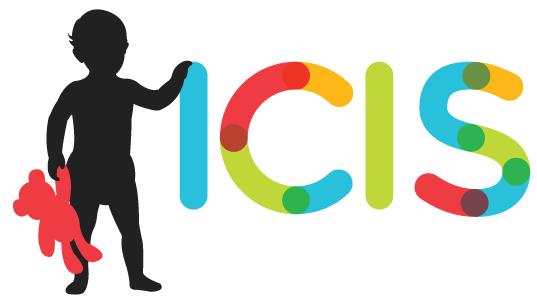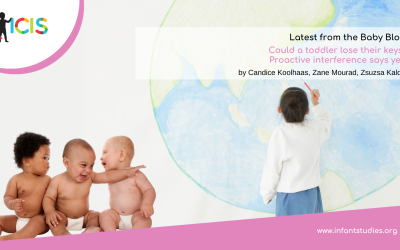by Rachel Barr
This month, Policy Insights from the Behavioral and Brain Sciences (PIBBS) is featuring a special issue highlighting the work of some of our ICIS members, each of which has provided a brief review on an important issue regarding infant development and its implications for public policy. The special issue is divided into three sections, one of which contains 3 articles on issues related to diversity, equity, and inclusion during infancy. The three papers focused on the need to consider the cultural context in which infants develop, discussing the need for and exposure to diverse faces from multiple races in everyday interactions, the need for digital equity, and the importance of inclusion of multiple cultural perspectives on parent child rearing practices for motor development.
In the first paper on diversity, Laurie Bayet discusses the importance of diverse exposure to different faces during infancy due to the privileged perceptual role that faces have early in infancy. Infants learn a wealth of information from faces from gaze following to learn about objects, lip reading to learn about language, and emotional expressions to learn emotion. Just as they do with different phonemes, infants experience a relative loss in the ability to individuate the faces of people from social groups unfamiliar to them, unless they have more diverse exposure to different faces. By 9- to 12-months, infants are less able to process gender, race, or species differences if they have less experience with them. By 9 months, children growing up in monoracial environments are more likely to match other race faces with a foreign language and less likely to follow the gaze of the other race face. However, Bayet stresses that infancy is a period of plasticity for processing faces and states that “perceptual training with other-race faces in infancy prevents the other-race effect”. Bilingualism is also associated with less racial bias. She concluded that infant interaction with people from diverse racial backgrounds is necessary to reduce or prevent perceptual and social biases to faces. She also discusses the implications of mask wearing for the development of face processing. She reports that infants seem to be able to learn from faces even when covered by masks and how infants do this is not yet clear. However, such learning may be partly due to rich interactions with individuals in the home who do not wear masks. The risk however is that this may provide less diverse exposure.
I discuss the role of digital equity. Digital media is pervasive in everyday life and media’s utility was brought into sharp focus during the COVID pandemic. The paper considers the potential benefits and pitfalls of media for young children. There are many benefits of carefully produced educational media and video chat during early childhood. For example, exposure to diverse racial faces can reduce perceptual and social bias as described by Bayet, and media has been demonstrated to be effective in this reduction. However, many low-resourced families and those living in rural communities are not able to reap these benefits due to underconnectivity. Underconnectivity is not due to lack of devices, but rather results from poor bandwidth and/or the prevalence of outdated technology that cannot keep up with the current demands and software updates. Increased and affordable access to broadband is needed to allow infants to gain educational and social benefits of media. On the other hand, the media also brings risks. For example, many platforms include algorithms that drive viewers to engage for protracted periods, such as the autoplay feature. Other platforms are monetized and request users to pay for digital items. Finally, media content is not universally inclusive. Additional resources are needed to develop content that is educational, racially linguistically and culturally inclusive, and free of bias.
Karasik and Robinson discuss the importance of inclusiveness in developmental science by considering multiple cultural contexts in which infants develop. They point out that a major pitfall in understanding motor development is the disconnect between the theory that motor development is invariant and hence there are clear motor milestones and a body of literature showing that motor development is highly sensitive to context. There is a huge range of childrearing practices associated with physical development. For example, in Tajikistan, cradling – involving tightly binding children into cradles for extended periods throughout their infancy – is a common practice to enhance sleep, emotion regulation, and social interactions. Although motor skills do emerge later for Tajik children than Western milestones, no long-term negative effects on motor development have been associated with cradling practices. At the other extreme, some cultural groups stress freedom of movement and frequently “exercise” their infants to encourage motor development. These – sometimes profound – variations reveal that motor development is not a linear process wherein each milestone must be met at a given time and in a set order, but rather depends on the environment and childrearing practices that surround each child. Notably, this conclusion is at odds with the fact that interventions are typically based on screening tests for having passed a certain milestone at a given age. The authors stress that “…milestones are inadequate conventions for charting early development. Based on Western standards, milestones ignore cultural variation in childrearing and environment.”
The articles not only point out potential problems associated with lack of diversity, equity, and inclusion; the authors also provide insightful evidence-based strategies for how we can address them. Bayet suggests the need for interaction with people from different racial groups to reduce perceptual and social racial bias. Barr argues that policymakers can increase equity in access to media and digital resources by facilitating the access to affordable and reliable broadband. Policy makers should also ensure that children have access to a safe digital playground. To reduce risks of exploitative practices, policy makers can introduce and enforce new regulations. Finally, Karasik and Robinson argue that research needs to be much more inclusive to consider the multitude of ways that early experiences can shape development. “Policy should incorporate the cultural and ecological context in which children’s behavior occurs.” We can only gain as a scientific field by including more cultural perspectives in our developmental science and in the policy implications we derive from it. Thus, the authors of the articles in this section came to a similar overarching conclusion: Developmental science and public policy on diversity, equity, and inclusion support positive infant development across multiple domains.
ICIS members can access the Policy Insights from the Behavioral and Brain Sciences Special Issue free of charge via the Member Only section of the ICIS website. To log in, please click here.
About the Author

Rachel Barr
Georgetown University




